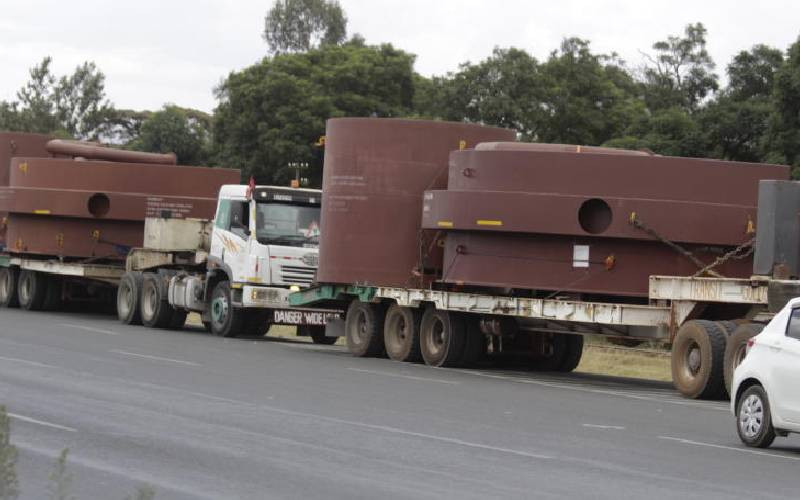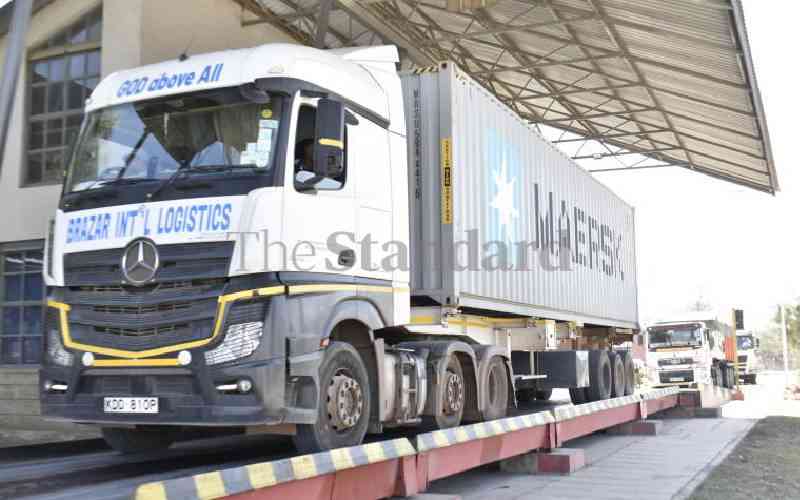KENYA: The city of Mombasa, the gateway to East Africa, is for a good reason taken as the starting point of transport logistics along the Northern Economic Transport Corridor that leads to the landlocked trade partners of Kenya; Uganda, Rwanda, Burundi and South Sudan.
Thus, Mombasa plays a pivotal role in economic development across the East and Central African region.
To boost this role, the Government has prioritised the development of key infrastructure in a bid to spur regional economic activity.
Traffic congestion is one of the key non-monetary trade barriers affecting business.
The Kenya National Highways Authority (KeNHA) is one of the key partners in ensuring successful and lucrative economic integration between Kenya and her neighbouring countries.
Kenha is in the process of implementing several key projects, both in Mombasa and along the Northern Corridor.
Among them is Port Reitz and Moi International Airport access road, jointly financed by the Government of Kenya and Trademark East Africa.
Then there is the dualling of the Mombasa-Mariakani highway. KeNHA will erect two new weighbridge stations on each side of the road at Mariakani and put up dedicated lanes for trucks approaching the weighbridge, thus eliminating the traffic snarl-ups sometimes associated with the weighbridge.
Other projects funded by the World Bank Group include the rehabilitation of Bachuma Gate and Maji ya Chumvi along the Mombasa–Nairobi highway.
Other planned projects include the Mombasa Northern Bypass, which will run from Miritini to Mtwapa.
Also, KeNHA is executing a massive project that will change the economic fortunes of Mombasa residents, under the Mombasa Port Area Development Project (MPARD), popularly known as the Dongo Kundu Bypass.
The project will connect the South and West without getting into the Mombasa Island.
Currently, the only available permanent crossing channel from Mombasa Island to the South Coast is the ferry, operated by the Kenya Ferry Service.
On average, 300,000 passengers and 6,000 vehicles cross from Mombasa Island to the South Coast.
The Mombasa Port Area Road Development Project, which will be implemented through a loan from the Japan International Co-operation Agency (JICA), will be undertaken in three phases:
Stay informed. Subscribe to our newsletter
Construction works of a 10.1km dual carriageway from Miritini Junction to Kipevu; an Interchange at Miritini and at the entry of Kipevu, Rail-over-road bridge at Miritini, a weighbridge along the Kipevu link road, and an access road to the Moi International Airport forms part of Phase I.
The key purpose of this segment is to ensure a quicker turn-around time for freight logistics companies delivering and collecting cargo at the port.
Phase II will entail the construction of the 8.96km Mwache–Dongo Kundu stretch with room for two bridges.
The 6.86km Dongo Kundu–Kibundani stretch will be constructed as part of the Phase III package. It will entail construction of a site-seeing bay at the start of the project as well as an interchange at Kibundani junction with the Likoni–Ukunda–Lunga Lunga road.
Upon completion of the three phases, the Dongo Kundu Bypass is expected to bring far-reaching benefits and a very positive impact to traffic flow management in the city and its environs. The road will reduce travel turn-around time and catalyse industrial development, and minimise transportation costs by mitigating the loss of man-hours.
The road will also enhance the development of tourism in the South Coast, which has always been curtailed as a result of congestion and other complications related to ferry transport.
Exponential growth is expected to be discerned in other sectors of the economy including the blossoming of the real estate industry in South Coast.
This will in turn boost niche tourism with the attendant benefits of employments and improved per capita income for the locals.
The new growth impetus will spill over into Kwale County, whose economy is dependent on the free movement of goods and services from Mombasa Island and surrounding areas.
To ensure that the benefits of this project accrue within the shortest time possible, KeNHA will hasten implementation of the project.
 The Standard Group Plc is a
multi-media organization with investments in media platforms spanning newspaper
print operations, television, radio broadcasting, digital and online services. The
Standard Group is recognized as a leading multi-media house in Kenya with a key
influence in matters of national and international interest.
The Standard Group Plc is a
multi-media organization with investments in media platforms spanning newspaper
print operations, television, radio broadcasting, digital and online services. The
Standard Group is recognized as a leading multi-media house in Kenya with a key
influence in matters of national and international interest.
 The Standard Group Plc is a
multi-media organization with investments in media platforms spanning newspaper
print operations, television, radio broadcasting, digital and online services. The
Standard Group is recognized as a leading multi-media house in Kenya with a key
influence in matters of national and international interest.
The Standard Group Plc is a
multi-media organization with investments in media platforms spanning newspaper
print operations, television, radio broadcasting, digital and online services. The
Standard Group is recognized as a leading multi-media house in Kenya with a key
influence in matters of national and international interest.








